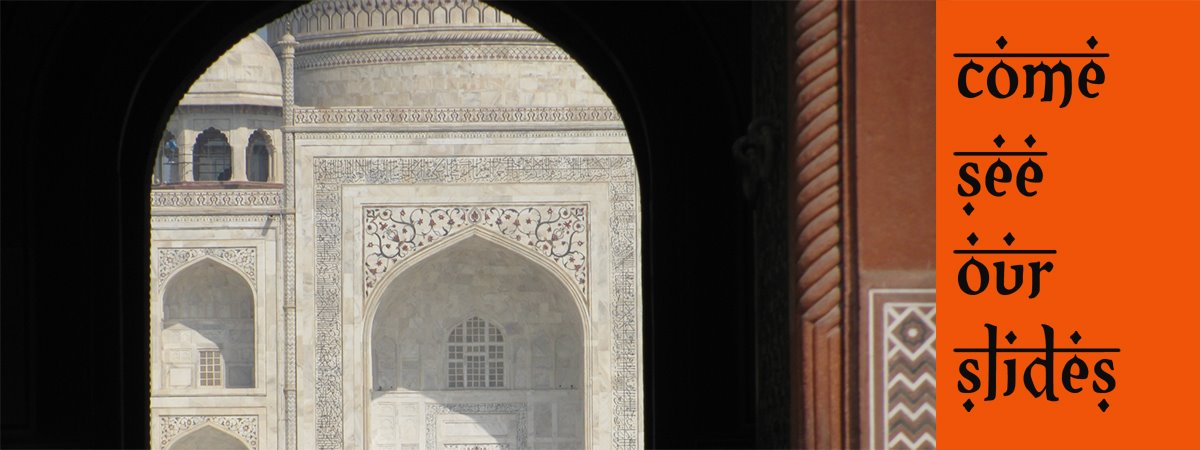
Isa Khan’s Tomb Enclosure is on the same site as Humayun's Tomb. This tomb was built about 20 years before the larger Humayun’s Tomb. The following are pictures on the site of the tomb outside and inside. See below for pictures of Humayun's Tomb.



This is inside the Isa Khan enclosure. Appears to be a doorway to the interior which may have been used at one time. Now it is just a carved relief. The designs are all in stone and have been crafted and carved by hand. We watched some modern workers making copies of the original pieces from other parts of the complex to see how they did it. They do use some patterns, but in the end, they chip away at the stone with a hammer and chisel.



This is a perforated stone screen called a Jali --this is the Hindi word (sounds like "Jolley"). We also saw it written as jolly and jalee in our tour books. Most often made from one piece of stone. There all have patterns and from a non-trained observer, all seem to be different. Some have inlaid precious or semi-precious stones. These are quite characteristic of the architecture in many official palaces & temples. They serve many purposes: as a privacy screen, art, and as a way to move air without the sacrifice of privacy. The Royals would often watch events through the jali so not be seen, but to be able to see the happenings among the people.
The above ground mausoleums do not all have markings as to who was in each, however, the little raised area on top signifies a male burial.


The picture showing just the top of a building in the hazy distance is both the wonderful Delhi air and the top of Humayun's Tomb.
Nizamuddin East, Delhi, India
Humayun’s Tomb (built 1562-1572), is a complex of buildings in Mughal style. It is a 16th century mausoleum with stone walls on three sides and anciently a river on the 4th side. Walkways, and gardens surround this and the Isa Khan tomb. Humayun Tomb was built on orders of Humayun's widow and supervised by Yumayun, the second great Mughal emperor. It is significant as the first Persian-style 'garden tomb' on the Indian subcontinent. The site is well preserved as an example of early Mughal architecture. It combines a mixture of Muslim and Persian influences and shows the scale and grandeur that later incorporated into several other Mughal monuments including the Taj Mahal. It is believed that from this mausoleum inspired Shahjahan for the design for the Taj Mahal.



